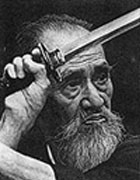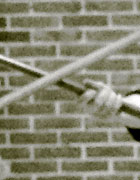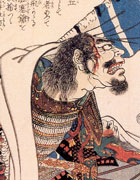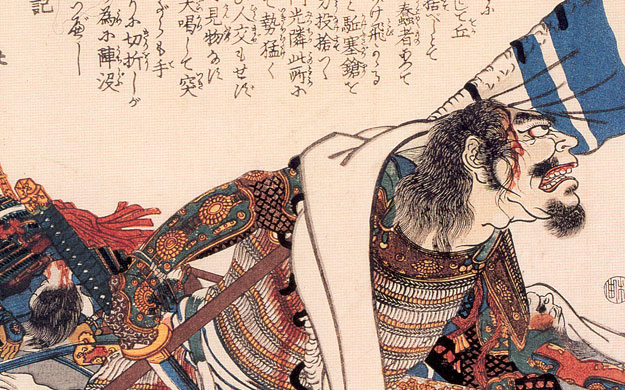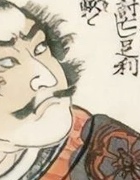
The primary written record of Sugino’s style is the book Budo Kyo Han from 1941. This book was written by Yoshio Sugino and Ito Kikue and was published with a foreword by the then head priest of the Katori shrine, who described the work as the ‘Katori Shinto ryu budo manual’ . It gives us a look into how Katori Shinto ryu was practiced before and during World War II.
Yoshio Sugino was born on the 12th of December 1904 in a farmer family in the village of Narutomachi, Chiba. In 1918 he became a student at the department of commerce and industry of Keio University. Here he began his study of several martial arts, such as judo and kendo. Despite his small figure (159 cm and just 56 kg) judo became his big passion, and Sugino became an advanced student of the Kodokan, the central judo head quarters of Jigoro Kano. After his study Sugino worked as a clerk in Taipei for a year, in Japan-occupied Taiwan. After that he had seen enough of office life.
On the 15th of September 1927 Sugino opened his own dojo in Kawasaki. This dojo still exists and is now led by one of his sons. Apart from being a professional martial arts instructor in his own and other dojos, Sugino earned his money with a bone-setting practice.
Though Sugino originally principally taught judo, he became disillusioned with judo as a modern sport and took an interest in the classic bugei. Starting from 1928 he also studied Yoshin koryu ju-jutsu, a style from the Edo period. After getting his 4th dan in judo Sugino was urged by Kano himself to join the classic budo (kobudo) programme of the Kodokan. Kano was of the opinion that his judoka also had to study the classic fighting arts. At his request the Katori shrine sent four teachers or shihan to the Kodokan to teach the advanced students like Sugino and Minoru Mochizuki (the future founder of Yoseikan aikibudo) once a week. On their way back the shihan also visited the Sugino dojo. One of them, Ichizo Shiina, became Sugino’s teacher. Later, in 1937 or 1938, they would together give a Katori demonstration to the emperor.
In 1932 Sugino also became a student of the Aikido founder Morihei Ueshiba, in his ‘hell dojo’. Three years later Ueshiba gave Sugino his Aikido teaching licence. After the Japanese capitulation in 1945 the Sugino dojo would also serve as a dojo of the Aikido organisation.
From 1937 Sugino taught judo and Katori (sometimes in the form of naginata lessons for girls) in different schools and institutions in Chiba. In 1939 he became judo instructor at his old Keio University. During the war Sugino was allowed to keep training, because he wasn’t in active service, just an auxiliary soldier with the provisioning troops. The allied bombings eventually also destroyed his dojo. The last year of the war Sugino spent in Fukushima, in the countryside. To the great chagrin of his fellow travelers he had traveled there in an overcrowded train, arms full of naginata and yari he wanted to save from the allied bombs.
After the war Sugino resumed his life in Kawasaki. Because of his reputation Akira Kurosawa hired him in 1953-1954 to train the actors of the movie Seven Samurai and to choreograph the fighting scenes. Later Sugino also worked in Kurosawa’s Hidden Fortress and Yojimbo, Hiroshi Inagaki’s Miyamoto Musashi and a number of other movies and television dramas.
In the eighties Sugino was the first Katori teacher to admit foreign students to his dojo. At a great age he even visited Europe to teach in France, Italy, Belgium and Switzerland. I myself remember him from 1990, when I traveled to Belgium together with my then teacher Erik Louw and training partners such as Jan Feller and Gerry Groenemeyer (now teaching Katori in Denmark) to be taught by both him and Hatakeyama Sensei. Though he was 85 years old, Sugino still stood dead straight on the tatami, correcting the smallest details in the weapon use of beginning and advanced students in his own polite way. The memory of his gentleman-like personality remains an important source of inspiration for me in continuing the tradition in which he was rooted.
Sugino O-Sensei passed away on the 13th of June 1998.
Stephen Snelders
Source material
- oral tradition
- Tsukaza Matsuzaki, ‘The Last Swordsman: Yoshio Sugino’, Aikido Journal 24 (1997), nrs. 1-4
- Stanley A. Pranin, ‘Yoshio Sugino’, in: Aikido Masters: Prewar Students of Morihei Ueshiba (Tokyo: Aiki News, 1993), 199-211
Links
Pictures of Sugino SenseiTraining with Sugino Sensei
Aikido Journal – Article about Yoshio Sugino
